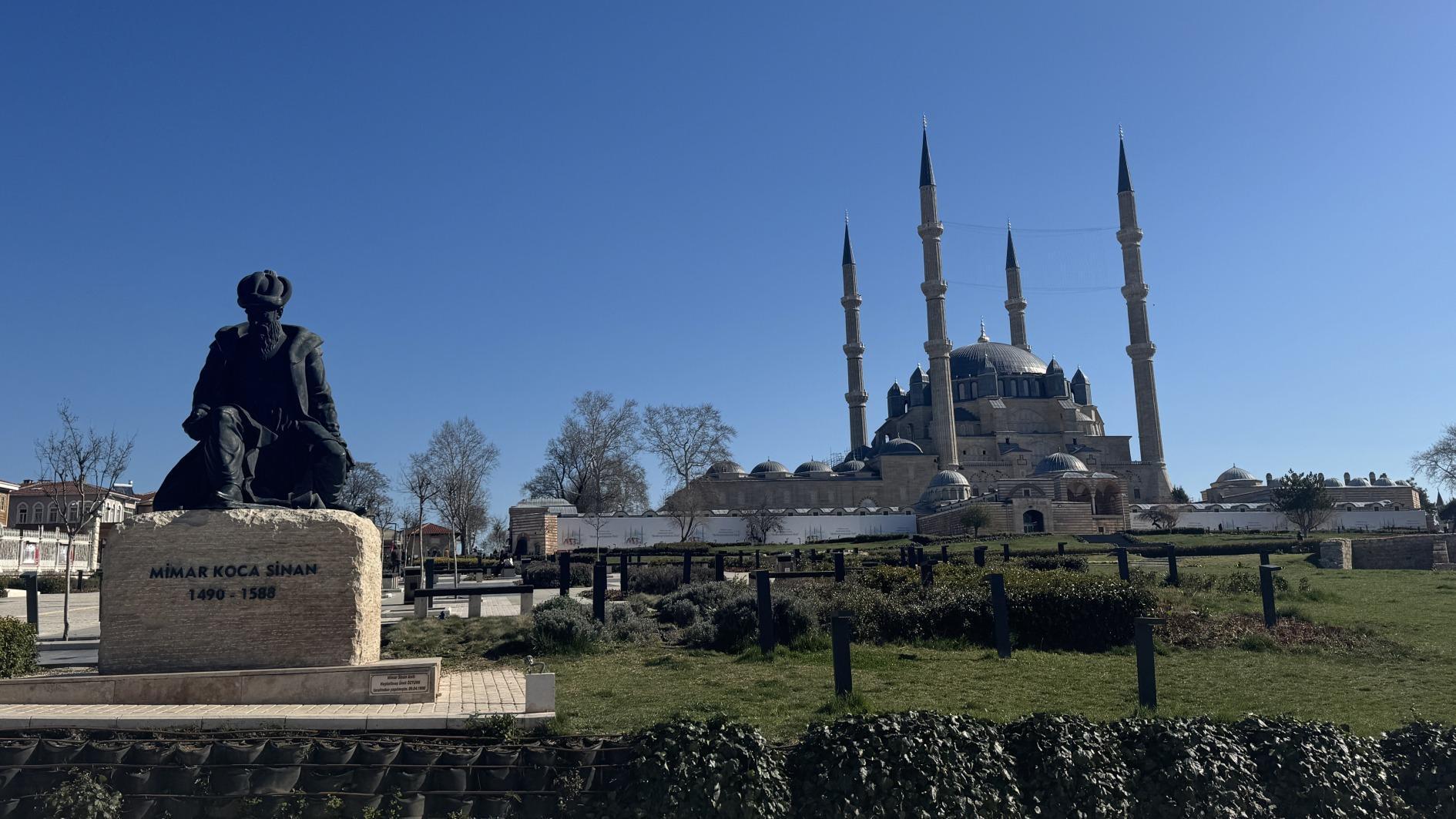
As one of Türkiye’s significant cities, the northwestern province of Edirne has a history spanning thousands of years, natural wonders and deep-rooted traditions, making it a popular destination for local and international travelers.
Located in the Marmara Region, Edirne was the second capital of the Ottoman Empire and the country’s gateway to Europe. With its rich history, nature and renowned cuisine, the city offers an unforgettable travel experience to its visitors.
To reach Edirne, one can travel by road from Istanbul Airport in approximately two hours and 30 minutes, or from Ankara in about six hours. Train travel is also an option from these cities.
Edirne was conquered by Sultan Murad I in 1361 and served as the capital of the Ottoman Empire for 88 years until the conquest of Istanbul, becoming an important cultural center during this period.
A city where Ottoman heritage is strongly felt, Edirne was also the capital of the Roman and Byzantine Empires, preserving the traces of multiple civilizations throughout history.
Some of the must-visit historical sites in Edirne include Edirne Palace (New Palace), the second-largest Ottoman palace after Topkapı Palace; the Selimiye Mosque and Complex, designed by Mimar Sinan and inscribed on the UNESCO World Heritage List in 2011; the Eski Mosque, built in 1414 and famous for its monumental calligraphy; the Bayezid II Complex Health Museum, which comprises a mosque, medical school, imaret, hospital, bathhouse, kitchen and granary; the Edirne Museum, which is home to archaeological and ethnographic artifacts; and the Kırkpınar Oil Wrestling Field, home to one of the oldest traditional Turkish wrestling events.
The Sultan Bayezid II Complex Health Museum is a particularly notable site that attracts thousands of visitors annually. Enver Şengül, the museum’s director, said that the museum is one of the most significant structures in both Ottoman and medical history.
Built as a foundation hospital by Sultan Bayezid II in 1488, the complex provided free medical treatment.
“This center was built as Sultan Bayezid II embarked on the Kili and Akkerman campaigns. Besides being a hospital, it was part of a larger complex that included a magnificent mosque and a medical school, where students trained under an apprenticeship system before working in other hospitals,” said Şengül.
The hospital functioned for 400 years until the Ottoman-Russian War, after which conflicts and occupations periodically disrupted its operations. In recent years, restoration works by the General Directorate of Foundations and Trakya University have transformed it into an exceptional museum, drawing nearly 165,000 visitors in 2024.
Şengül highlighted the significance of music therapy in the facility’s history, saying, “Music therapy has been used by the Turks since the Shamanic period. It was practiced by the Seljuks and Ottomans but was institutionalized here for the first time. The complex had a 10-member musical ensemble, including singers and instrumentalists, who played different musical modes based on patients’ conditions to aid their recovery. Additionally, fragrant plants were cultivated in the surrounding gardens to contribute to the healing process.”
Beyond its historical and cultural wealth, Edirne offers adventure seekers unique experiences with its natural landscapes. Visitors can explore the Saros Gulf, Tunca River, Meriç River, Musabeyli Grove and Gala Lake National Park. The Karaağaç district is another highlight, with its serene atmosphere and historic train station, which now serves as an exhibition hall affiliated with Trakya University.
Edirne’s culinary delights
As a former Ottoman capital, Edirne has a rich culinary heritage, offering a variety of meat dishes and traditional desserts. Many of these dishes were once served to sultans and their guests.
Signature local delicacies include Edirne-style leaf liver (tava ciğer), Edirne white cheese, kapama, ciğer sarma and historical Ottoman desserts such as almond paste, Deva-i Misk Helva, and Edirne almond cookies.
For those looking to experience the city’s rich gastronomy and handicrafts, Edirne Bedesten Bazaar, Ali Pasha Bazaar, and Arasta Bazaar offer organic products, local flavors and traditional crafts.
A city where history, nature and flavors unite, Edirne is also a hub for traditional arts. UNESCO’s Intangible Cultural Heritage List features several Edirne traditions, including Hıdırellez spring celebrations, the Kırkpınar Oil Wrestling Festival, the art of ebru (paper marbling) and traditional Turkish tile craftsmanship. Meanwhile, Edirne’s tangible heritage sites on UNESCO’s World Heritage List include the Selimiye Mosque and Complex, Uzunköprü (Long Bridge), and the Sultan Bayezid II Complex.
The Kırkpınar Oil Wrestling Festival, an annual event held since 1362, is the world’s oldest wrestling festival. In 2024, it will mark its 664th edition, continuing its deep-rooted legacy.